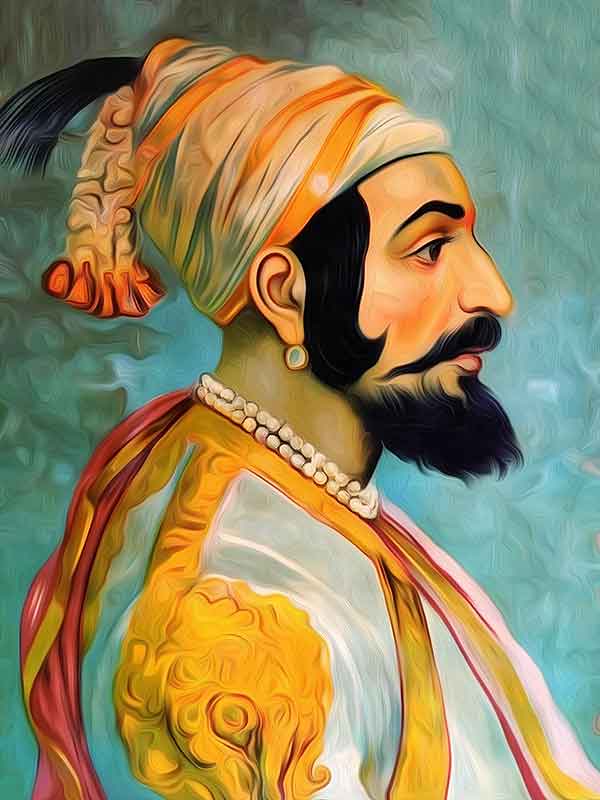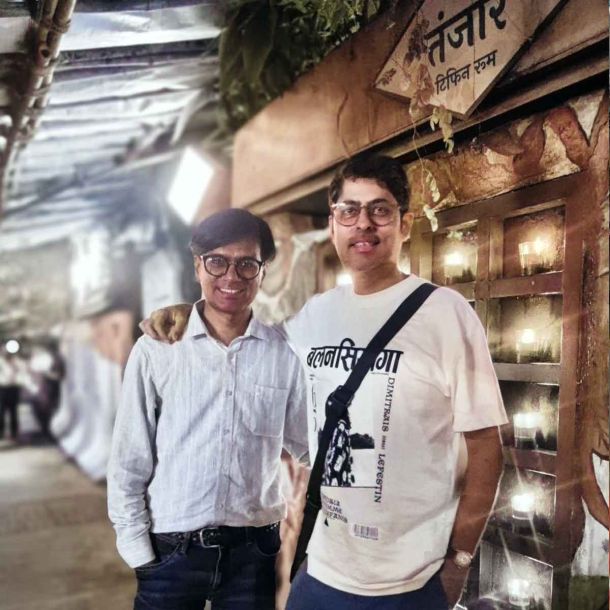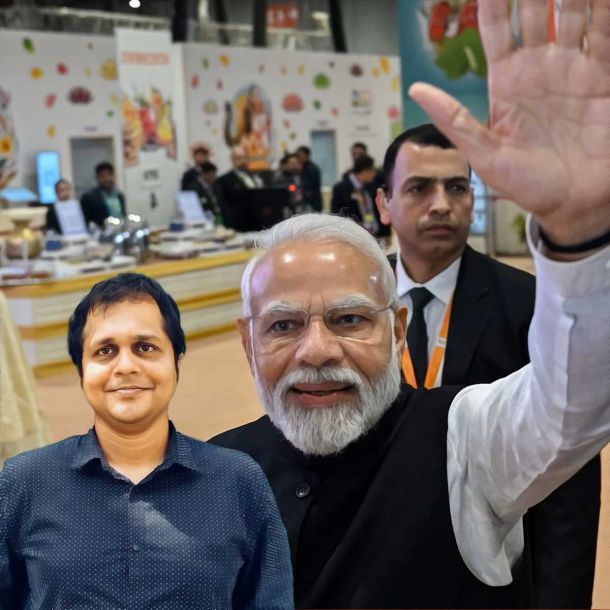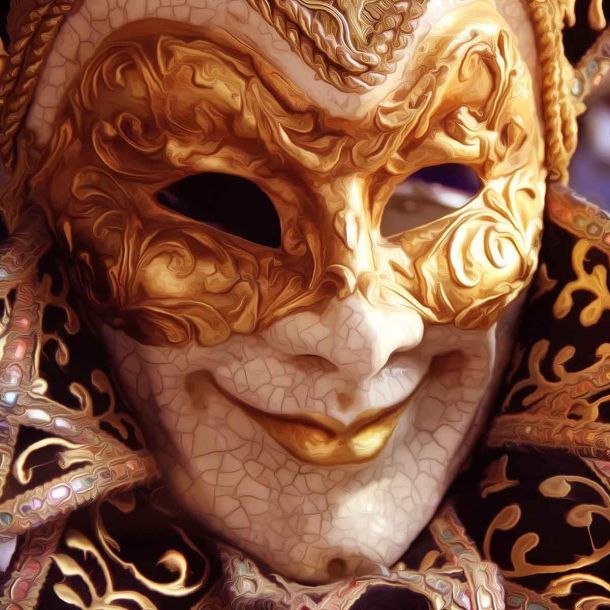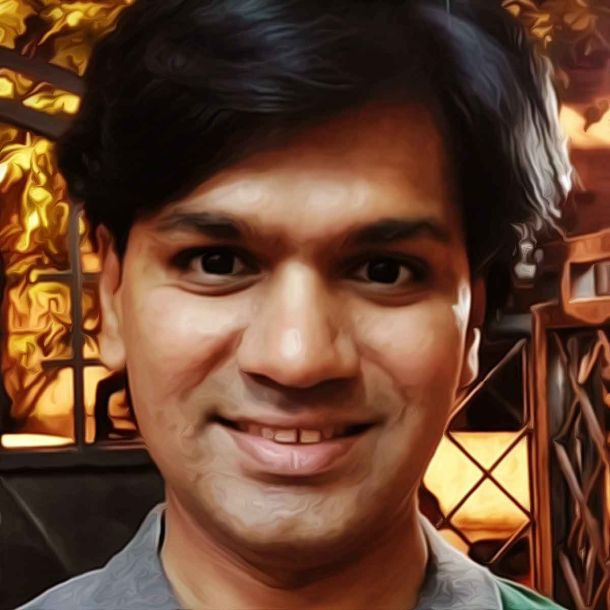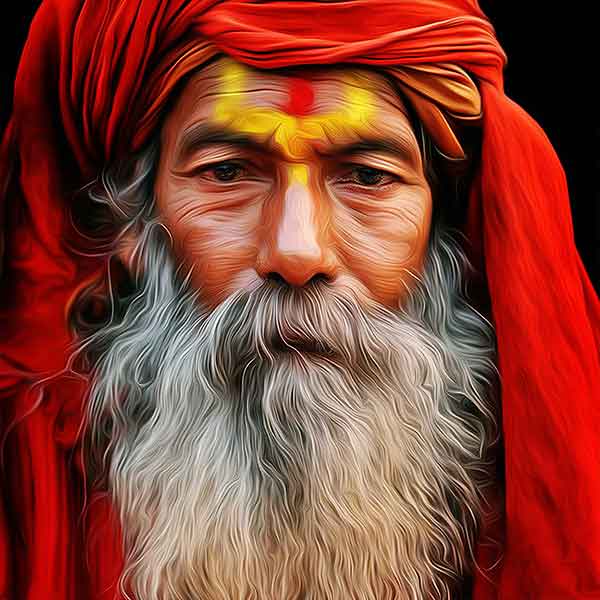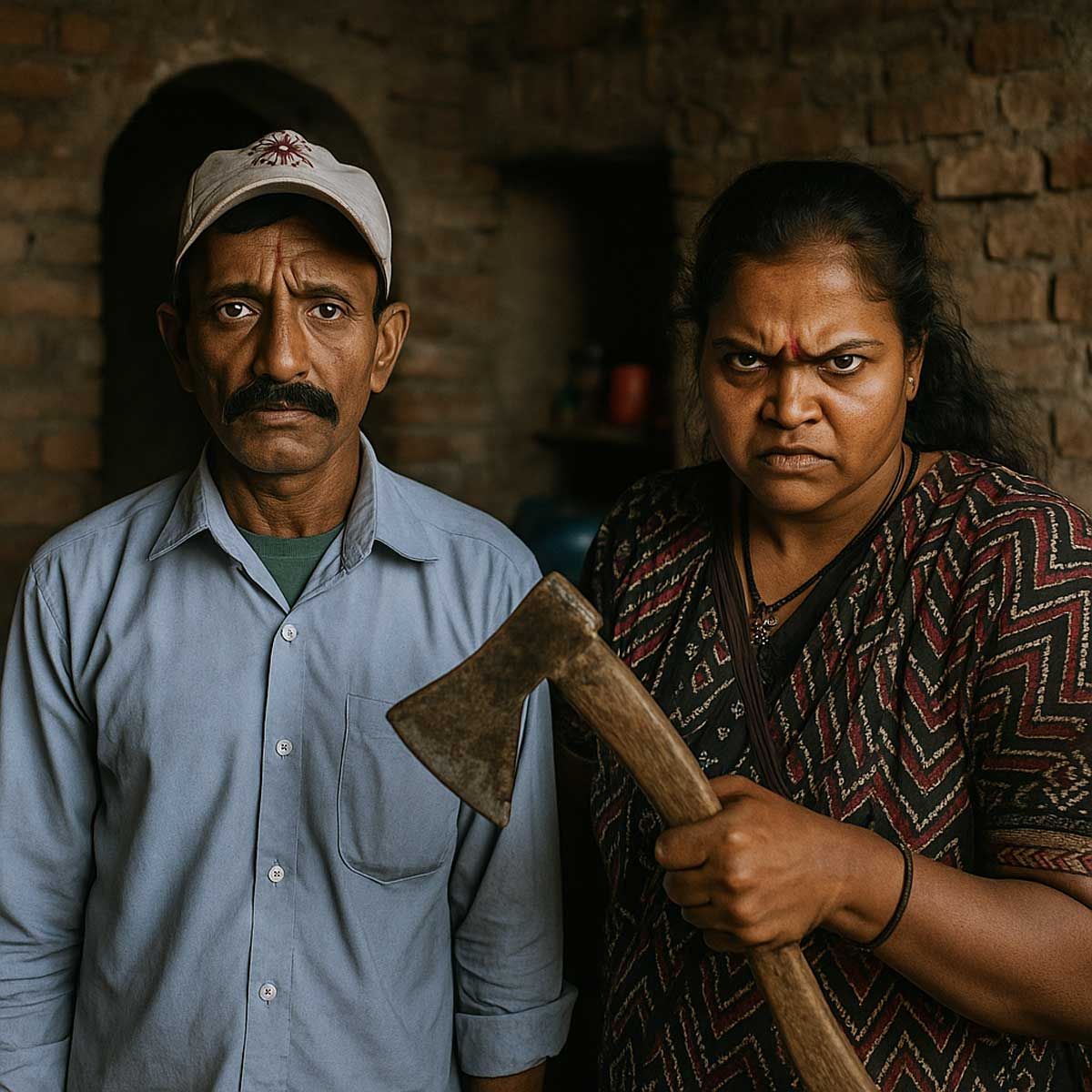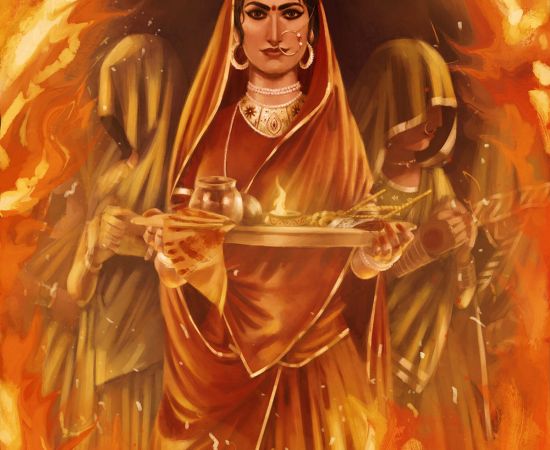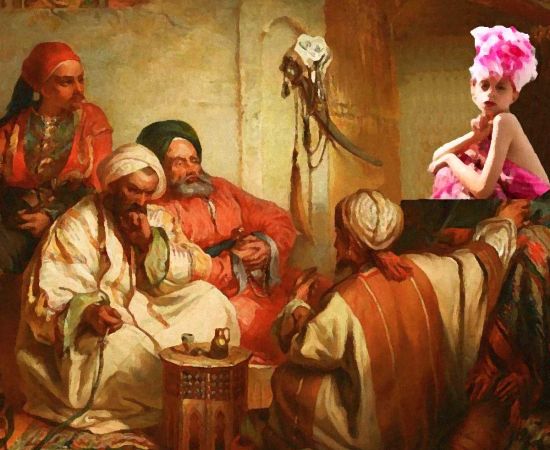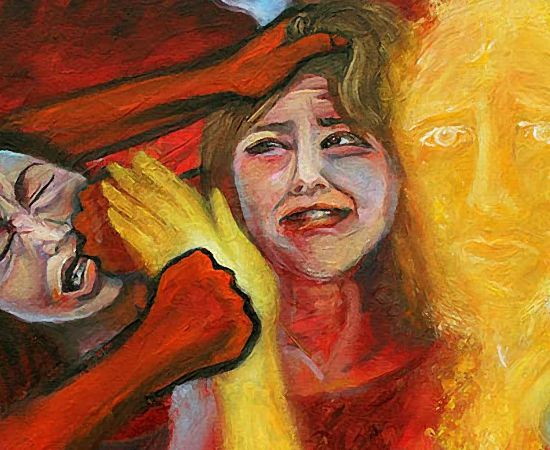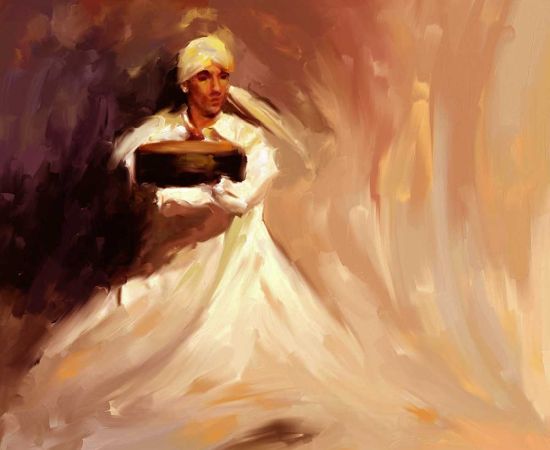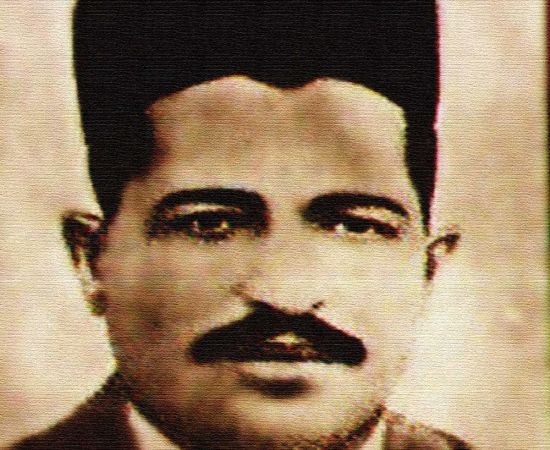More Coverage
Twitter Coverage
Satyaagrah
Written on
Satyaagrah
Written on
Satyaagrah
Written on
Satyaagrah
Written on
Satyaagrah
Written on
JOIN SATYAAGRAH SOCIAL MEDIA
As Chhaava reignites debates, Islamists glorify Mughal ‘victories,’ yet Aurangzeb’s heirs sell tea in slums while Shivaji’s descendants serve in Parliament—Sultana Begum, claiming Red Fort, lives on a ₹6000 pension, her plea dismissed as a “waste of time"

Vicky Kaushal’s latest film, "Chhaava," based on the life of Chhatrapati Sambhaji Maharaj, the second Maratha emperor, has emerged as the biggest cinematic success of 2025. The film, which captures the resilience and bravery of the Maratha warrior, set a new record with the highest opening of Kaushal’s career. It narrates Sambhaji Maharaj’s unwavering dedication to his father, the legendary Chhatrapati Shivaji Maharaj, and his ultimate sacrifice in resisting the tyrannical rule of the Mughal emperor Aurangzeb. The movie has achieved an astounding Rs. 219.75 crore net collection in India within just seven days, proving its massive appeal among audiences. Co-starring Rashmika Mandanna and Akshaye Khanna, the film delivers a powerful portrayal of history that has deeply resonated with viewers.
|
Audiences were visibly moved by the film, many leaving the theaters in tears after witnessing the harrowing and heroic journey of Sambhaji Maharaj on screen. The movie’s impactful storytelling and Kaushal’s performance left people overwhelmed, as they experienced the emotional intensity of a historical struggle that still holds deep significance for many Indians. The film successfully brought to life a crucial chapter of history, one that reflects the sacrifices made for Dharma and the resistance against foreign tyranny.
However, as expected, the overwhelming response to "Chhaava" unsettled a certain section of people—Islamists and Mughal apologists—who continue to glorify the rule of Aurangzeb and his oppressive policies. Many of them appear to take perverse pleasure in the portrayal of Sambhaji Maharaj’s suffering at the hands of the Mughal ruler. One such reaction came from "journalist" Kavish Aziz, who posted a tweet stating, “They are content with their victory in the movie because they were unable to win in real life.” Accompanying his tweet was a clip from the film, depicting a gravely wounded Sambhaji Maharaj and a sadistic Aurangzeb, suggesting that the Maratha king was merely a piece of art, while the Mughal tyrant was the artist—a clear attempt to relish in the brutality inflicted upon Hindus.
Swara Bhasker, an actress more known for her anti-Hindu and anti-India rants than for her work in cinema, couldn’t hold back her disdain either. In yet another display of her deep-seated animosity towards Hindu culture, she mocked Hindus for celebrating their past, referring to them as “a brain and soul-dead society.” She dismissed "Chhaava" as “a heavily embellished, partly fictionalized filmy torture of Hindus from 500 years ago,” attempting to downplay the atrocities depicted in the film. Bhasker further criticized people for reacting emotionally to history while allegedly ignoring contemporary issues like stampedes and mismanagement.
Her statements, however, did not sit well even within her own ideological circle. Swati Chaturvedi, a former history student from Delhi University and a fellow left-liberal, quickly countered Bhasker’s remarks. She set the record straight, stating, “Nothing remotely fictional about the torture inflicted by Aurangzeb on Sambhaji Maharaj.” She went on to warn Bhasker against distorting history for personal agendas, highlighting that playing games with historical facts was unacceptable.
|
Meanwhile, other extremist Muslim voices joined the outrage against "Chhaava", dismissing it as a “fake Bollywood movie.” The denials and revisionist takes from such individuals were promptly called out by history enthusiasts and fact-checkers who pointed to documented evidence of Aurangzeb’s persecution of Hindus, including the brutal execution of Sambhaji Maharaj.
Amidst these heated debates, journalist Dilip Mandal made a compelling observation about the real outcome of the Mughal-Maratha conflict. He remarked, “Aurangzeb could not even go back to Delhi because all his might was invested in facing the challenges posed by the Maraths. He spent 23 years imprisoned in the Deccan, where he eventually perished. The Mughal Sultanate was reduced to the Red Fort of Delhi in less than 40 years. The Mughal descendants now operate tea stalls and a tailoring cart in Kolkata. Justice of history and time.”
Mandal’s statement served as a harsh reality check for Mughal sympathizers who continue to romanticize an empire that ultimately crumbled under its own weight. Despite Aurangzeb’s military campaigns and oppressive policies, his empire could not sustain itself. The Maratha resistance, led by warriors like Sambhaji Maharaj, proved too formidable, and within a few decades of Aurangzeb’s death, the Mughals were reduced to mere puppets within the walls of Delhi’s Red Fort.
The descendants of the so-called ‘great Mughal rulers’—once the most powerful dynasty in India—are now far removed from their ancestors’ once-glorified rule. Many of them live in obscurity, running small businesses and struggling to make ends meet. This serves as a powerful reminder of the impermanence of oppressive regimes and the resilience of those who fight for their beliefs and heritage.
The debate ignited by "Chhaava" once again underscores the deep divide between those who cherish India’s past and those who attempt to rewrite it. While Islamists and Mughal apologists continue to glorify foreign invaders, the overwhelming success of "Chhaava" proves that Indians still hold their true heroes—like Sambhaji Maharaj—close to their hearts.
|
Destitute Heirs of Mughal Empire Live a Life of Misery
The once-glorious Mughal dynasty, which ruled over vast parts of India for centuries, now finds its descendants struggling to make ends meet in extreme poverty. Sultana Begum, the widow of Mirza Bedar Bukht, a great-grandson of Bahadur Shah Zafar II, lives in dire conditions, far removed from the opulence once associated with her lineage.
Her late husband, Mirza Bedar Bukht, was born in 1920 in Rangoon, Burma (now Myanmar) and passed away in 1980 in Kolkata. Their marriage took place in 1965, when Sultana Begum was just 14 years old, while her husband was already 46, older by 32 years. Despite his royal ancestry, Bedar Bukht led a humble life as a soothsayer, earning very little to support his family. His inability to provide for his wife and children forced Sultana Begum to endure hardship even before she became a widow. “Poverty, fear and lack of resources pushed him to the brink,” she revealed in an interview cited by a 2021 report in Al Jazeera.
Today, Sultana Begum resides in a cramped 66-square-foot two-room hut in a Howrah slum on the outskirts of Kolkata, where she barely survives on a meagre pension. Among her few possessions, she holds onto documents verifying her marriage to Mirza Mohammad Bedar Bakht, a supposed direct descendant of the last Mughal ruler, Bahadur Shah Zafar II.
|
The death of Mirza Bedar Bukht in 1980 marked the beginning of an even tougher struggle for Sultana Begum. For decades, she has pleaded with the authorities to recognize her royal heritage and grant her rightful compensation. Despite her efforts, she continues to live in destitution, battling the harsh realities of life in poverty.
For years, Sultana Begum lived in a small shack, sharing space with one of her grandchildren. The tiny structure lacked basic amenities—she shared a kitchen with her neighbors and relied on a community tap down the street to wash clothes. In a desperate attempt to sustain herself, she once operated a small tea shop near her house, but that too was demolished due to a road expansion project. With no other means to earn a livelihood, she was later granted a monthly pension of Rs. 6,000 from the Indian government, recognizing her as a legitimate heir of Bahadur Shah Zafar II, as per reports.
Describing her past struggles, Sultana Begum recounted, “We were living in Taltala and subsisted on the pension he received as the legal heir of Bahadur Shah Zafar II, which was a few hundreds of rupees. In 1984, I shifted to Howrah with my children, trying to raise them single-handedly. After he died, I worked from time to time, running a tea stall, making bangles but now age has caught up and I am confined to bed most of the time,” she told The Indian Express in 2024.
According to Sultana Begum, her late husband, Mirza Bedar Bukht, was the last recognized direct male descendant of Bahadur Shah Zafar II. She asserted that he was initially granted a British pension and later received financial aid from the central government, the Nizam, and the Hazrat Nizamuddin Trust. However, after his passing, Sultana Begum found herself in an increasingly desperate financial situation, struggling to sustain her family.
Lamenting the dire state of her descendants, she expressed, “I have a son and five daughters. The eldest of my daughters died in 2022, delaying the filing of the appeal. My children remained uneducated, none of them could finish school and we continue to live in penury,” she emphasized.
|
Begum’s Claim Over Red Fort
In 2021, Sultana Begum made an ambitious claim over Red Fort, the historic fortress that once symbolized the power of the Mughal empire. Asserting herself as a rightful heir to the Mughal dynasty, she argued that she had spent many years petitioning authorities to acknowledge her royal heritage and compensate her adequately following the death of her husband in 1980. Taking her fight to the courts, she filed a lawsuit seeking recognition as the legitimate owner of the Red Fort, which served as the center of Mughal rule in the 17th century. Expressing her hopes for justice, she stated, “I hope the government will definitely give me justice. When something belongs to someone, it should be returned.”
Sultana Begum questioned the stark contrast between her ancestral lineage and her present-day struggles, lamenting, “Can you imagine that the descendant of the emperors who built the Taj Mahal now lives in desperate poverty?” Her argument was rooted in the belief that her late husband was a direct descendant of Bahadur Shah Zafar II, the last Mughal ruler. However, by the time of Bahadur Shah Zafar’s coronation in 1837, the Mughal empire had shrunk to the boundaries of Delhi, as the East India Company had already taken control over most of India.
The Red Fort, which had once housed emperors and symbolized Mughal sovereignty, had deteriorated over the years. Around the turn of the 20th century, the British colonial authorities ordered renovations for the fort as it had fallen into disrepair, with many of its original structures destroyed in the aftermath of the 1857 rebellion. Later, the Red Fort became a national emblem of India’s independence struggle, with Pandit Jawaharlal Nehru, the country’s first prime minister, marking India’s freedom in August 1947 by hoisting the national flag from its ramparts. This tradition continues to this day, with each successive prime minister carrying out the annual Independence Day flag-hoisting ceremony at the Red Fort.
At the core of Sultana Begum’s legal battle was the claim that the Indian government had unlawfully occupied the property that rightfully belonged to her family. She asserted that she should have inherited the Red Fort, believing that its current status was a result of historical injustice. However, the Delhi High Court did not accept her plea, dismissing it as a “gross waste of time” and pointing out that her legal team had failed to present adequate evidence to explain why Zafar’s descendants had remained silent for over 150 years before filing the case.
On 20th December 2021, Justice Rekha Palli rejected Sultana Begum’s petition, citing the extraordinary delay in filing the claim. The court stated, “Even if the petitioner’s case were to be accepted that late Bahadur Shah Zafar II was illegally deprived of his property by the East India Company, as to how the writ petition would be maintainable after such an inordinate delay of over 164 years when it is an admitted position that the petitioner’s predecessors were always aware of this position.”
|
The ruling made it clear that any legal claim over the Red Fort had been rendered void by time, and the court saw no merit in reopening a historical grievance that dated back over a century and a half. Begum’s case was ultimately dismissed, leaving her to continue her life in poverty, far removed from the grandeur her ancestors once commanded.
Despite the setback in 2021, Sultana Begum remained determined to reclaim what she believed to be her rightful inheritance. Her lawyer, Vivek More, affirmed her decision to challenge the court's order, stating, “She has decided to file a plea before a higher bench of the court challenging the order.” Refusing to give up hope, Begum expressed her unwavering belief in justice, asserting, “I hope that today, tomorrow or in 10 years, I will get what I’m entitled to. God willing, I will get it back. I’m certain justice will happen.”
Her lawsuit was not just about reclaiming ownership of the Red Fort but was also an appeal for financial assistance. The case was filed "in the hope that the government will take note of her and help her out financially," given her dire living conditions. Begum contended that the British unlawfully took control of the Red Fort on 19th September 1857, following the fall of Delhi during the First War of Independence. She maintained that since she was a direct descendant of Bahadur Shah Zafar II, she was legally entitled to compensation for the Union government’s alleged unauthorized use of the Red Fort over the years.
In November 2023, Begum proceeded to file an appeal against the Delhi High Court’s 2021 order, reiterating her claim that the Indian government was in unlawful possession of the Red Fort. She argued, “The Union government is having illegal possession of the Red Fort, which is the appellant’s ancestral property and the government is not willing to give compensation or possession of such property, which is a direct violation of petitioner’s fundamental right and constitutional right.”
However, her persistent efforts to gain possession of the historic structure once again met legal resistance. The Delhi High Court dismissed her appeal, refusing to entertain her plea. A division bench, comprising Acting Chief Justice Vibhu Bakhru and Justice Tushar Rao Gedela, rejected her case, citing an unjustifiable delay in filing the challenge. The court noted that her appeal was filed more than two and a half years after the initial judgment, making it legally unsustainable.
|
Last Nail in the Coffin of Mughal Dynasty
The great rebellion of 1857, a massive uprising against British rule, was led by Mangal Pandey and is now recognized as India’s first war of independence. During this time of turmoil, a frail 82-year-old Bahadur Shah Zafar II, who had been the Mughal emperor from 1836 to 1857, was reluctantly declared the leader of the rebellion. The reality, however, was that Zafar was neither a warrior nor an inspiring leader—he was merely a symbolic figurehead, fully aware that the disorganized insurrection was destined to fail.
Within a month, the British, far more disciplined and ruthless, encircled Delhi, crushing the rebellion brutally and decisively. The Mughal royal family, realizing the inevitable, surrendered—but this act of submission did not save them from their fate. The British executed all ten of Zafar’s surviving sons, eliminating the last of the Mughal heirs. With this, the once-mighty Mughal lineage came to a violent and humiliating end.
After being stripped of his empire, authority, and dignity, Bahadur Shah Zafar II was banished from India, never to return. Under strict surveillance, he was forced onto a bullock cart and sent to Rangoon (modern-day Myanmar), where he lived out his remaining days in impoverished exile. The once-glorified emperor, who once sat atop the Peacock Throne, spent his final five years in misery, forgotten and neglected. His death in 1862 marked the definitive end of the Mughal dynasty in India.
The irony is striking. The Mughals, who looted India’s wealth and ruthlessly suppressed its people, built the Red Fort, the Taj Mahal, and other grand monuments with the fortunes they plundered from the land they ruled. Their descendants today, however, live in slums and extreme poverty, with nothing but a fading legacy and old documents to prove their ancestry.
|
Islamist fundamentalists may take twisted pleasure in celebrating the brutality of the Mughal era, as films like "Chhaava" so powerfully depict. However, the harsh reality is that the last remnants of this dynasty have been condemned to a life of obscurity and destitution. Their fall from power was swift and merciless, ensuring that the once-mighty empire would never rise again.
Meanwhile, the descendants of Chhatrapati Shivaji Maharaj and Chhatrapati Sambhaji Maharaj—the very warriors who resisted the Mughals' tyranny—hold a proud and honorable position in modern India. Many of them have been elected to the Indian Parliament, continuing the legacy of leadership and service. The contrast could not be more poetic—while the successors of Aurangzeb struggle for daily survival, the heirs of Shivaji and Sambhaji thrive as respected figures in society.
Perhaps Dilip Mandal was right when he remarked that justice has indeed been served by history and time. The Red Fort, once a symbol of Mughal supremacy, now serves as India’s national emblem, where the Prime Minister hoists the tricolor every Independence Day—a fitting reversal of fate for a dynasty that once ruled over the land but now has nothing left to its name.
 Support Us
Support Us
Satyagraha was born from the heart of our land, with an undying aim to unveil the true essence of Bharat. It seeks to illuminate the hidden tales of our valiant freedom fighters and the rich chronicles that haven't yet sung their complete melody in the mainstream.
While platforms like NDTV and 'The Wire' effortlessly garner funds under the banner of safeguarding democracy, we at Satyagraha walk a different path. Our strength and resonance come from you. In this journey to weave a stronger Bharat, every little contribution amplifies our voice. Let's come together, contribute as you can, and champion the true spirit of our nation.
 |  |  |
| ICICI Bank of Satyaagrah | Razorpay Bank of Satyaagrah | PayPal Bank of Satyaagrah - For International Payments |
If all above doesn't work, then try the LINK below:
Please share the article on other platforms
DISCLAIMER: The author is solely responsible for the views expressed in this article. The author carries the responsibility for citing and/or licensing of images utilized within the text. The website also frequently uses non-commercial images for representational purposes only in line with the article. We are not responsible for the authenticity of such images. If some images have a copyright issue, we request the person/entity to contact us at This email address is being protected from spambots. You need JavaScript enabled to view it. and we will take the necessary actions to resolve the issue.
Related Articles
- "जय भवानी": Chhaava crosses ₹200 crore, tearing through the distortion of history, unveiling Aurangzeb’s brutality, triggering a tear-jerking meltdown of the Islamo-leftist cabal, and marking a civilizational awakening as Bharat reclaims its truth
- Gandhi corrupted the original Hindu bhajan ‘Raghupati Raghav Raja Ram’ by including ‘Allah’
- Father of the Nation! Absolutely not. Mohandas Karamchand Gandhi was not the father of the nation either officially or otherwise
- Hitler’s propaganda minister Joseph Goebbels said 'Repeat a lie often enough and it becomes the truth' - Whitewashing a genocide – how the exodus of Kashmiri Pandits is being blamed on Hindus instead of on Islamists
- Secularism ideology of India views and appeases Indian Muslims As Pakistanis
- Busting the myth of “glories” of the Mughal Empire and its economic superiority as fantasized by Indian Marxist and Liberal historians
- Set of 'Ashram3' series ransacked by Bajrang Dal Activists, Throw ink at producer Prakash Jha's face
- Calcutta Quran Petition: A petition to ban the Quran altogether was filed 36 years ago, even before Waseem Rizvi petitioned for removing 26 verses from Quran
- Secular Supreme Court in communal 'Khela Hobe' move urges Jagannath temple to allow entry of non-Hindus
- Let's see what Sam Manekshaw said when Karan Thapar tried to undermine India’s win in 1971
- After continuous protests from Hindus, Gurugram administration withdraws its decision to allow Namaz in 8 public places
- Menace of historical oblivion: Hindus have forgotten about a thousand years of Islamic persecution
- 'Muh me ram bagal me chhuri' - Gandhi’s politics is hollow and noisy, full of treachery and deceit’: Read what Dr. Ambedkar said about the ‘Mahatma’
- "Immoral cannot be made moral through the use of secret law": Shethepeople, self-styled “feminist website presented Maulana Baba Jamdar as Hindu Tantrik, to cover news about a woman forced “to bathe in public as a ritual to help her conceive male child”
- Nehru's Himalayan Blunders which costed India dearly - Integration of Princely States
